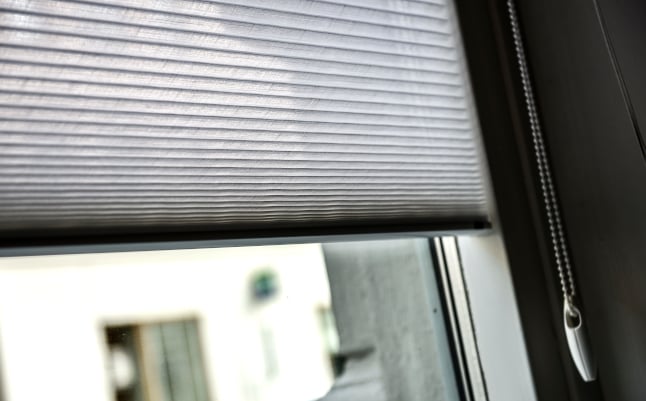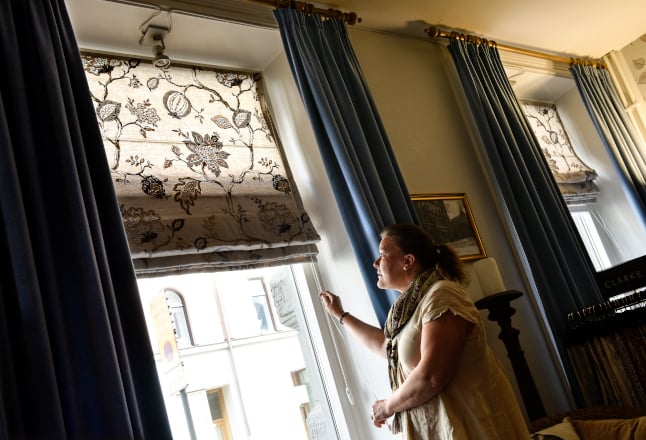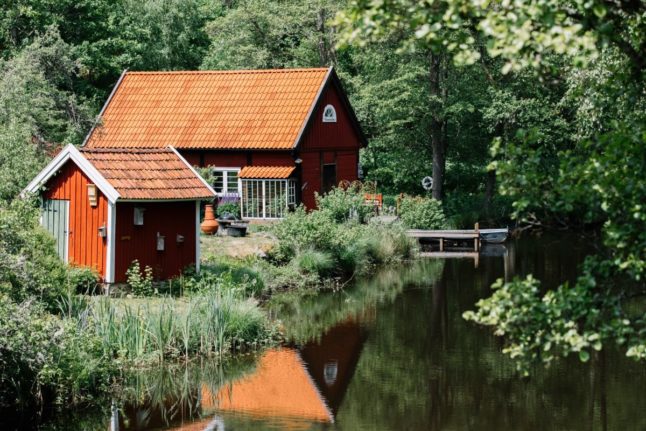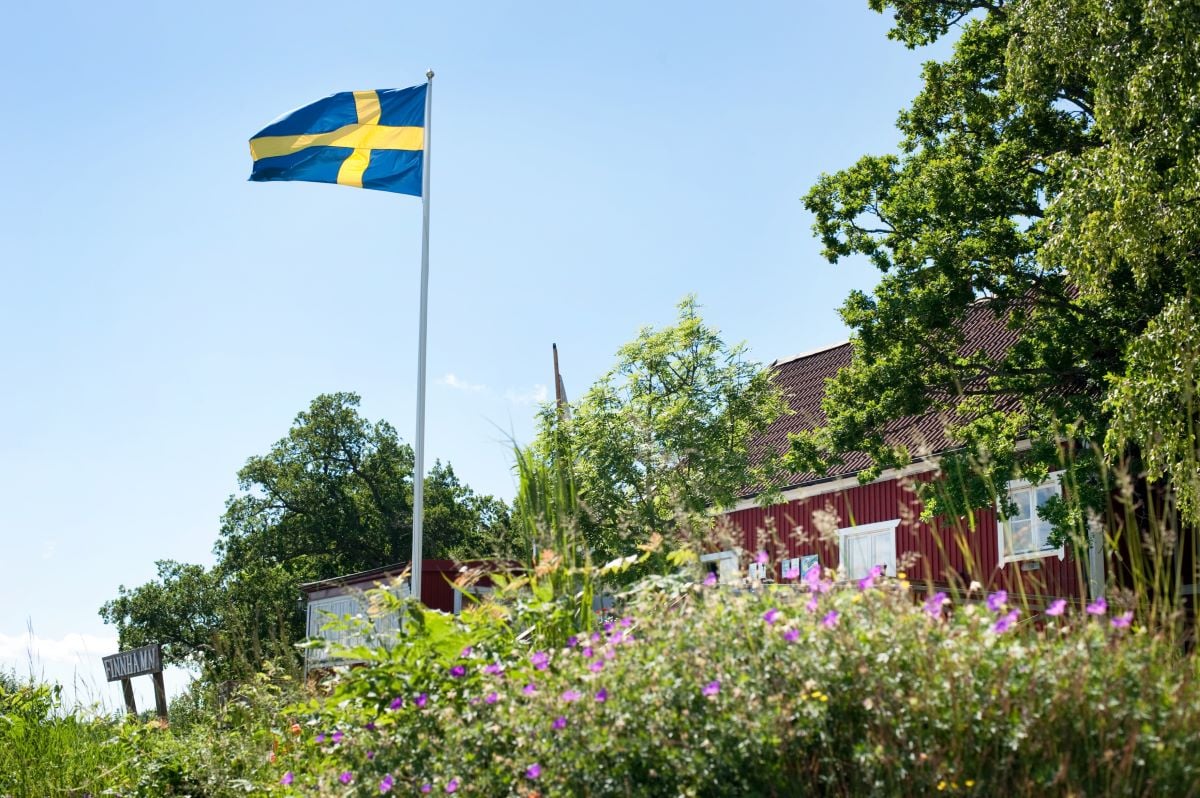Visiting the forest-ringed Uppsala suburb where my father-in-law lives shortly after arriving in Sweden, I was struck by how little privacy everyone seemed to want or need.
Whereas back home in the UK, every back garden would have been obscured from public view with high hedges and fences, in Sweden they merged without any sort of barrier into a public park.
What was more confounding still was the absence of curtains.
Many Swedes don’t seem to have them at all, and those that do often seem resolved to leave them permanently undrawn.
The lace curtains of British suburbia are the stuff of cliché. People (supposedly) peer at each other through the chinks of curtains that are never opened, searching for evidence of dirty habits, dark secrets, or family strife in their neighbours.
Swedes, it appears, have nothing to hide.
According to Jonas Engman, a curator at Stockholm’s Nordic Museum, the lack of curtains may simply reflect how late the country was to achieve material prosperity.
“I think that the most crude and brutal explanation is that we didn’t have windows,” he told me.
It took until the late 19th century for Swedes in the countryside to get windows, he explains, and at that point well over 90 percent of people lived in the countryside.
“Textiles of that quality were expensive, and we were poor. I can’t imagine a poor farmer or other person in the countryside saying ‘finally we’ve built a house, but let’s spend the last money we have on curtains’.”
READ ALSO:

What’s behind Swedes’ apparent aversion to curtains? Photo: Anders Wiklund/TT
But Martin Krauklis, a biographer of the German religious reformer Martin Luther, believes the aversion to curtains may have much deeper roots in Sweden’s Lutheran Christianity.
“In the beginning of the Lutheran era, during ‘the orthodoxy’, there was iconoclasm in the churches and all adornments were taken down,” he noted.
“Between 1550-1700 private homes were also more strict for religious reasons. So a habit of not having curtains occurred.”
Traditionally in a Roman Catholic church, curtains are closed at points in the liturgy to conceal the altar from the congregation, allowing priests to perform the most mystical parts of the ritual in private.
For Martin Luther, whose project was to end the position of priests as mediators between God and humankind, altar curtains thus became a potent symbol of what was wrong with Catholicism.
Together with a suspicion of any sort of luxury at all, that might be part of the reason why the followers of the Lutheran pastor Lars Levi Laestadius in the 19th century became so opposed to what they called “the Devil’s underwear”.
They’re not alone. The followers of the 18th-19th century Lutheran pastor Henric Schartau, who lived mostly on the West Coast north of Gothenburg, were also barred from having curtains (or even flowers) in their windows.
Can Krauklis be right to identify a hangover from Lutheranism in the decorating habits of even non-religious Swedes?
Engman concedes that as well as a hangover from poverty, the reluctance to draw curtains may also reflect Swedes’ wish to show that (unlike Brits presumably), they have nothing to hide.
“I think that closing curtains is a little bit conspicuous. People might react by thinking, ‘is something going on that shouldn’t be going on there? What are they doing that they have to close curtains?'” he mused.

Take a walk through a Swedish neighbourhood and you’ll find most houses don’t have their curtains drawn. Photo: Anders Wiklund/TT
As it turns out, I’m not the only one who has noticed the lack of curtains. A question on the website Quora reads: “How do people in Nordic countries handle “private moments,” not having curtains on the windows?”
Andreas Svensson, a game designer, wrote in response that he did not mind the fact that people in Sweden sometimes even masturbate or have sex with the curtains open – although presumably most Swedes do not.
“I’ve seen both from neighbours several times, and I honestly couldn’t be less bothered by it,” he wrote.
“Ultimately, it’s in the privacy of their own home, there’s nothing morally wrong with what they’re doing, so good for them. Home is inherently considered a private space, which means you can indulge in what is arguably the most natural of behaviour as you wish.”
Might even this more radical openness have religious overtones? Might these unwitting exhibitionists also want to show they have nothing to hide, that their sexual behaviour actually is “natural”, and not somehow dark, furtive and perverse?
Perhaps.
On the other hand, there are clearly other, perhaps equally credible, explanations.
Svante Nordin, professor of history of ideas at Lund University, put the greater curtain use in the UK down to the different density and sociability of the population when I asked him.
“An Englishman’s home is his castle. Because of this he builds walls,” he stated. “A Swede is a lonely person. There is no one else about for miles and miles. Walls are not needed.”
I might add that Sweden is also dark and miserable for so much of the year that you can understand why people would want to let as much light into their houses as possible.





 Please whitelist us to continue reading.
Please whitelist us to continue reading.
a couple of friends came to visit from Italy a few years back, and they could´t belive that one could just walk in the streets and peer in everybodys homes, and that was their favourite “sigth-seeing” thing to do in Stockholm 🙂
In Singapore you can get fined if someone looks through your windows and sees you naked!